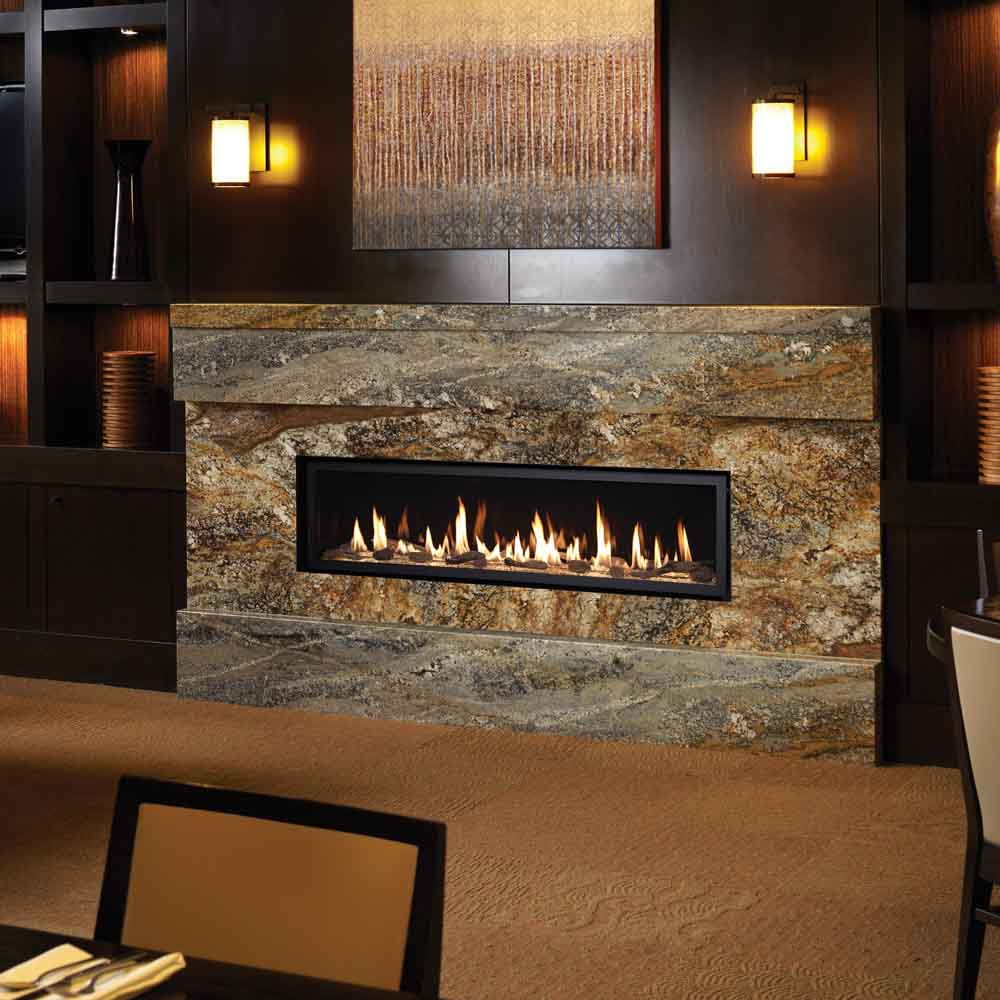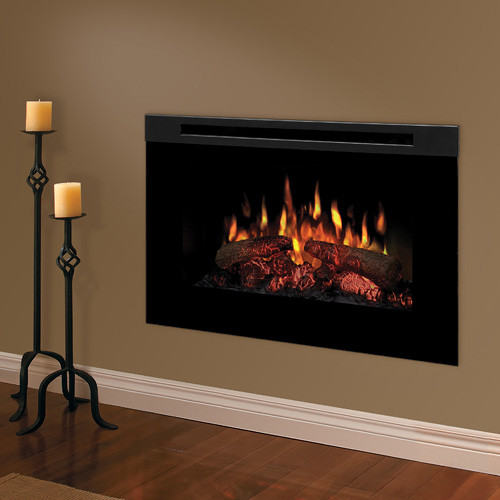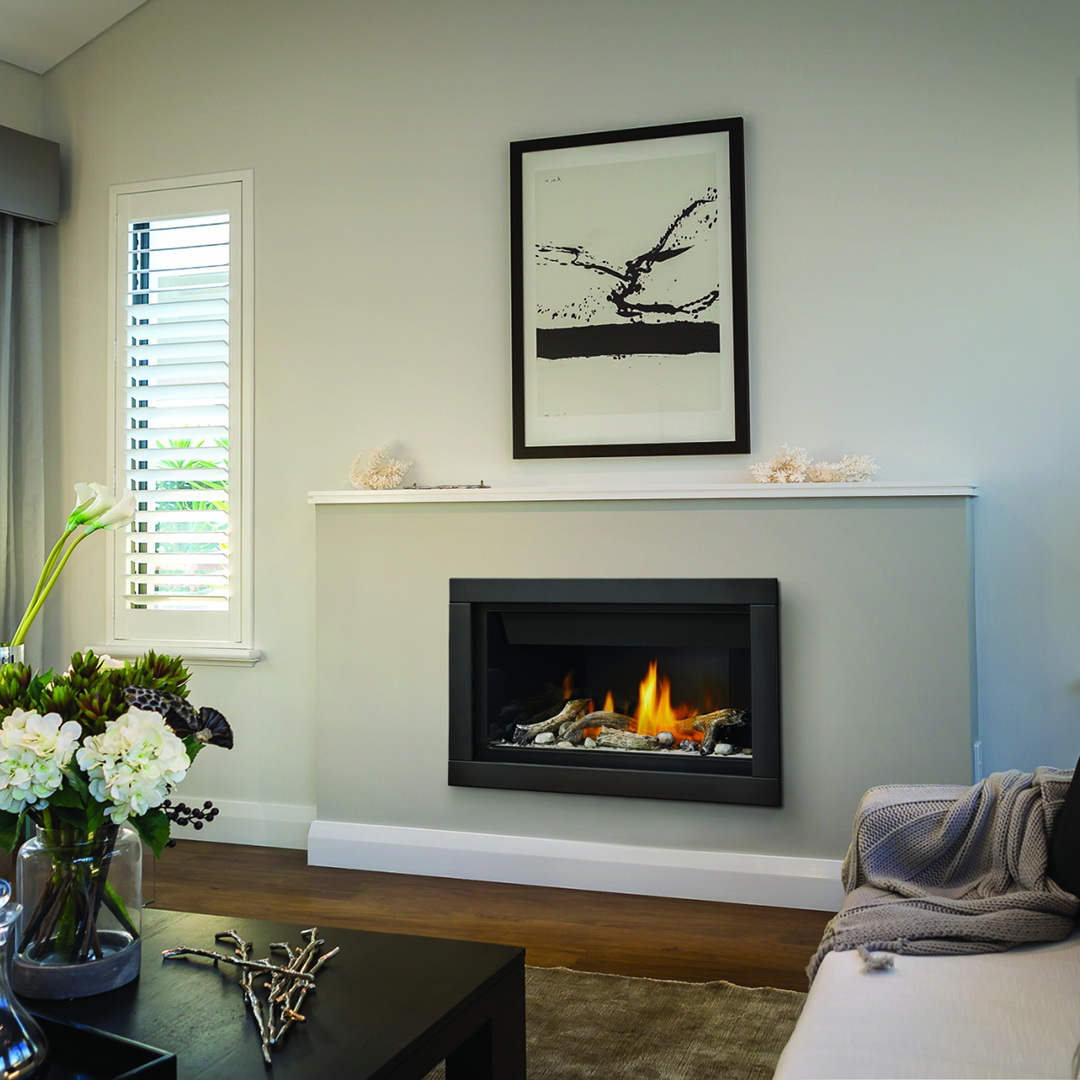Linear fireplace inserts have gained immense popularity in recent years, offering a modern, sleek, and efficient way to add warmth and ambiance to any room. These inserts not only serve as a focal point in contemporary interior designs but also provide a functional heating solution. Today we will discuss the details of linear fireplace inserts, covering their benefits, installation, maintenance, and more.

What is a Linear Fireplace Insert?
Definition and Features
A linear fireplace insert is a type of fireplace designed to be installed into an existing fireplace opening or built directly into a wall. Unlike traditional fireplaces, linear fireplace inserts are characterized by their elongated, horizontal design, which gives them a modern and stylish appearance. They come in various sizes, ranging from small inserts suitable for cozy spaces to larger models that can serve as a dramatic focal point in larger rooms.
Types of Linear Fireplace Inserts
There are several types of linear fireplace inserts, including electric, gas, and wood-burning models. Electric inserts are popular for their ease of installation and versatility. They can be plugged into a standard electrical outlet and offer features like adjustable flame settings, heat output, and even remote control operation. Gas inserts, powered by natural gas or propane, provide efficient heating and realistic flame effects. Wood-burning inserts, though less common in linear designs, offer the traditional appeal of a real fire with crackling logs and the aroma of burning wood.
Design and Aesthetic Appeal
One of the primary attractions of linear fireplace inserts is their sleek and contemporary design. They can seamlessly integrate into modern interiors, offering a clean and minimalist look. The linear shape allows for a wide viewing area, showcasing the flames more prominently than traditional fireplace designs. Many models also feature customizable options such as different media choices (like glass crystals, logs, or stones), various frame finishes, and LED lighting effects to enhance the visual appeal.

Efficiency and Heating Capabilities
Linear fireplace inserts are not just about aesthetics; they are also designed to be highly efficient heating solutions. Gas and electric models typically offer adjustable heat output, allowing you to control the temperature in your room effectively. Many inserts come with built-in fans or blowers to help distribute heat more evenly throughout the space. Some advanced models also feature thermostats and programmable settings, enabling more precise temperature control and energy savings.
Installation Flexibility
The installation of linear fireplace inserts is relatively straightforward compared to traditional fireplaces. Electric inserts require minimal installation work, often involving just plugging into an outlet and securing the unit in place. Gas inserts require a connection to a gas line, which should be performed by a professional. The flexibility in installation options makes linear inserts suitable for various settings, including apartments, condos, and homes where traditional fireplaces may not be feasible.
Safety Considerations
Safety is a crucial aspect of any heating appliance. Linear fireplace inserts are designed with several safety features to ensure safe operation. Electric models often come with automatic shut-off features, cool-touch glass, and overheat protection. Gas inserts typically have safety screens to prevent direct contact with the glass and oxygen depletion sensors to ensure safe combustion. Regular maintenance and following the manufacturer’s guidelines can help ensure the safe operation of your linear fireplace insert.

Benefits of Linear Fireplace Inserts
Modern Aesthetic Appeal
The sleek, horizontal design of linear fireplace inserts adds a contemporary touch to any room. They are ideal for modern and minimalist interior designs, providing a stylish focal point. The wide viewing area enhances the visual impact of the flames, creating a cozy and inviting atmosphere. Whether installed in a living room, bedroom, or office, a linear fireplace insert can elevate the overall aesthetic of the space.
Versatility in Installation
Linear fireplace inserts offer great versatility in terms of installation. They can be installed in various locations, including existing fireplaces, custom-built wall openings, or even as part of a media wall. Electric models are particularly easy to install, requiring only an electrical outlet. Gas inserts, while requiring a gas line connection, can be installed in more locations compared to traditional wood-burning fireplaces. This versatility allows homeowners to enjoy the benefits of a fireplace without the constraints of traditional installation requirements.
Efficient Heating Solution
Linear fireplace inserts are designed to provide efficient heating. Gas and electric models offer adjustable heat output, allowing you to control the temperature in your room. Many inserts come with built-in fans or blowers to help distribute heat evenly. Some advanced models also feature thermostats and programmable settings, enabling more precise temperature control and energy savings. This efficiency makes linear fireplace inserts a practical heating solution for various spaces.

Ease of Use and Maintenance
Linear fireplace inserts are generally easy to use and maintain. Electric models can be operated with a remote control, offering convenience and ease of use. Gas inserts are also relatively simple to operate, with many models featuring electronic ignition and remote control options. Maintenance requirements are minimal compared to traditional wood-burning fireplaces. Electric models require periodic dusting and inspection, while gas models may need annual servicing to ensure safe and efficient operation.
Environmental Benefits
Many linear fireplace inserts are designed with energy efficiency in mind, making them a more environmentally friendly option compared to traditional wood-burning fireplaces. Electric inserts produce no emissions, making them a clean and green choice. Gas inserts are also more efficient and produce fewer emissions than wood-burning fireplaces. Choosing a linear fireplace insert can help reduce your carbon footprint while still enjoying the warmth and ambiance of a fireplace.
Cost-Effective Heating
In addition to their aesthetic and environmental benefits, linear fireplace inserts can also be a cost-effective heating solution. They allow you to heat specific areas of your home, reducing the need to use central heating and potentially lowering your energy bills. Many models are designed to be energy-efficient, further contributing to cost savings. Over time, the investment in a linear fireplace insert can pay off through reduced heating costs and increased home value.

Interesting Articles You May Want to Check:
- Fireplace Insert Trim
- Fireplace Insert Steamers
- Fireplace Inserts Gas Logs Ventless
- Avalon Gas Fireplace Inserts Reviews
- Wood Fireplace Insert Tax Credit

Installation of Linear Fireplace Inserts
Pre-Installation Considerations
Before installing a linear fireplace insert, several factors need to be considered. First, determine the best location for the insert, considering factors like room layout, existing fireplace openings, and proximity to electrical or gas connections. Measure the space carefully to ensure the insert will fit properly. Additionally, check local building codes and regulations to ensure compliance. It’s also important to decide whether you will handle the installation yourself or hire a professional.
Choosing the Right Model
Selecting the right linear fireplace insert involves considering several factors. Decide on the type of insert (electric, gas, or wood-burning) that best suits your needs and preferences. Consider the size of the insert, ensuring it will fit in the desired location and provide adequate heat for the space. Look at the features offered by different models, such as adjustable flame settings, remote control operation, and customizable media options. Reading reviews and consulting with professionals can help you make an informed decision.
Preparing for Installation
Once you have selected the right model, prepare for the installation process. For electric inserts, ensure there is a nearby electrical outlet and that the circuit can handle the additional load. For gas inserts, ensure there is access to a gas line and that the installation area is properly ventilated. Clear the installation area of any obstructions and ensure the surface is level. Gathering all necessary tools and materials before starting the installation can help the process go smoothly.

Step-by-Step Installation Guide
The installation process varies depending on the type of insert. For electric inserts, start by assembling the unit according to the manufacturer’s instructions. Place the insert in the desired location and secure it in place. Plug the unit into the electrical outlet and test the operation. For gas inserts, it is recommended to hire a professional for installation. The process involves connecting the insert to the gas line, securing the unit in place, and ensuring proper ventilation. Always follow the manufacturer’s instructions and local building codes during installation.
Post-Installation Checks
After installation, perform several checks to ensure everything is working correctly. For electric inserts, check that the unit is securely in place and that all electrical connections are secure. Test the operation of the insert, including the flame settings and heat output. For gas inserts, check for any gas leaks and ensure proper ventilation. Test the ignition and flame settings to ensure everything is working correctly. Address any issues promptly to ensure safe and efficient operation.
Professional Installation Services
While some homeowners may choose to install a linear fireplace insert themselves, hiring a professional can ensure a safe and efficient installation. Professionals have the expertise and tools to handle the installation process, including connecting gas lines and ensuring proper ventilation. They can also ensure compliance with local building codes and regulations. Investing in professional installation can provide peace of mind and ensure the longevity and safety of your linear fireplace insert.

Maintenance and Care
Regular Cleaning
Regular cleaning is essential to maintain the appearance and functionality of your linear fireplace insert. For electric inserts, dust the unit regularly and clean the glass with a non-abrasive cleaner. Gas inserts require periodic cleaning to remove dust and debris from the burner and ventilation system. Follow the manufacturer’s recommendations for cleaning and maintenance to ensure the longevity of your insert.
Annual Inspections
Annual inspections are crucial to ensure the safe and efficient operation of your linear fireplace insert. For gas inserts, hire a professional to inspect the unit, including the gas lines, burner, and ventilation system. Electric inserts should be inspected for any signs of wear or damage, and the electrical connections should be checked for safety. Regular inspections can help identify potential issues early and prevent costly repairs.
Addressing Common Issues
Several common issues can arise with linear fireplace inserts. Electric inserts may experience problems with the electrical components, such as the heater or flame effect. Gas inserts may develop issues with the ignition system or gas lines. If you notice any issues, refer to the manufacturer’s troubleshooting guide or contact a professional for assistance. Addressing issues promptly can prevent further damage and ensure the safe operation of your insert.

Replacing Parts
Over time, certain parts of your linear fireplace insert may need to be replaced. For electric inserts, this may include the heater element, flame effect components, or remote control. Gas inserts may require replacement of the ignition system, burner, or gas lines. Always use genuine replacement parts recommended by the manufacturer and follow the instructions for replacing parts. Hiring a professional for part replacement can ensure the job is done correctly.
Seasonal Maintenance
Performing seasonal maintenance can help ensure your linear fireplace insert is ready for use during the colder months. Before the heating season, clean the unit thoroughly and perform any necessary maintenance tasks. Check the operation of the insert, including the flame settings and heat output. At the end of the heating season, clean the unit and inspect for any signs of wear or damage. Proper seasonal maintenance can extend the lifespan of your insert and ensure efficient operation.
Professional Maintenance Services
While many maintenance tasks can be performed by homeowners, hiring a professional for annual maintenance can ensure the safe and efficient operation of your linear fireplace insert. Professionals have the expertise and tools to perform thorough inspections and maintenance, including cleaning the burner and ventilation system for gas inserts. Investing in professional maintenance can provide peace of mind and ensure the longevity of your insert.

Common Mistakes to Avoid
Incorrect Installation
One of the most common mistakes is incorrect installation. Whether it’s an electric or gas insert, following the manufacturer’s instructions and local building codes is crucial. Incorrect installation can lead to safety hazards and inefficient operation. If you’re unsure about the installation process, it’s best to hire a professional to ensure the job is done correctly.
Neglecting Maintenance
Neglecting regular maintenance can lead to various issues, including decreased efficiency and potential safety hazards. Regular cleaning, inspections, and addressing any issues promptly are essential to keep your insert in good working condition. Neglecting maintenance can also void the warranty on your insert, leading to costly repairs.
Using Incorrect Cleaning Products
Using incorrect cleaning products can damage your linear fireplace insert. Abrasive cleaners or chemicals not designed for fireplaces can scratch the glass or damage the finish. Always use cleaning products recommended by the manufacturer and follow the instructions for cleaning your insert.
Ignoring Safety Features
Ignoring the safety features of your linear fireplace insert can lead to serious accidents. Electric inserts often have safety features like automatic shut-off and cool-touch glass, while gas inserts may have oxygen depletion sensors and safety screens. Always ensure these safety features are functioning correctly and follow the manufacturer’s guidelines for safe operation.
Overlooking Ventilation
Proper ventilation is crucial for the safe operation of gas inserts. Overlooking ventilation requirements can lead to dangerous levels of carbon monoxide buildup. Ensure that the ventilation system is installed correctly and inspected regularly. If you notice any ventilation issues, contact a professional immediately.
DIY Repairs
Attempting DIY repairs on your linear fireplace insert can be risky. Electric and gas inserts have complex components that require specialized knowledge to repair. Attempting repairs without the proper expertise can lead to further damage and safety hazards. Always contact a professional for repairs to ensure the job is done correctly.

How do I choose the right linear fireplace insert for my home?
Choosing the right linear fireplace insert involves considering factors such as the type of insert (electric, gas, or wood-burning), the size of the insert, and the features offered. Consider the heating needs of your space, the installation requirements, and your aesthetic preferences. Consulting with a professional can help you make an informed decision based on your specific needs.
Can I install a linear fireplace insert myself?
While electric inserts are relatively easy to install and can often be done as a DIY project, gas inserts require a connection to a gas line and should be installed by a professional. Incorrect installation can lead to safety hazards and inefficient operation. If you’re unsure about the installation process, it’s best to hire a professional to ensure the job is done correctly.
How often should I maintain my linear fireplace insert?
Regular maintenance is essential to keep your linear fireplace insert in good working condition. Perform regular cleaning and inspections as recommended by the manufacturer. Annual professional inspections and maintenance are also crucial, especially for gas inserts. Seasonal maintenance before and after the heating season can help ensure efficient operation.

What are the safety features of linear fireplace inserts?
Linear fireplace inserts are designed with several safety features to ensure safe operation. Electric models often include automatic shut-off features, cool-touch glass, and overheat protection. Gas inserts typically have safety screens, oxygen depletion sensors, and proper ventilation requirements. Following the manufacturer’s guidelines and regular maintenance can help ensure the safe operation of your insert.
Can linear fireplace inserts be used as a primary heat source?
While linear fireplace inserts provide efficient heating, they are generally designed to supplement the primary heating system rather than replace it. They can effectively heat specific areas of your home, reducing the need to use central heating and potentially lowering energy bills. However, relying solely on a linear fireplace insert for heating may not be practical for larger spaces.
What should I do if my linear fireplace insert is not working correctly?
If your linear fireplace insert is not working correctly, refer to the manufacturer’s troubleshooting guide for common issues and solutions. Check for any obvious problems, such as loose connections or a lack of power supply. If the issue persists, contact a professional for assistance. Attempting repairs without the proper expertise can lead to further damage and safety hazards.

Related Posts:
- Empire Natural Gas Fireplace Inserts
- Harman Fireplace Inserts: A Blend Of Efficiency And Elegance
- How Does a Fireplace Insert Work
- Gas Fireplace Inserts Reviews Consumer Reports
- Gas Fireplace Insert Service
- Electric Fireplace Inserts Installation
- Fireplace Insert Removal Cost
- Fireplace Inserts Gas Logs Ventless
- Wall Insert Fireplace
- DIY Gas Fireplace Insert